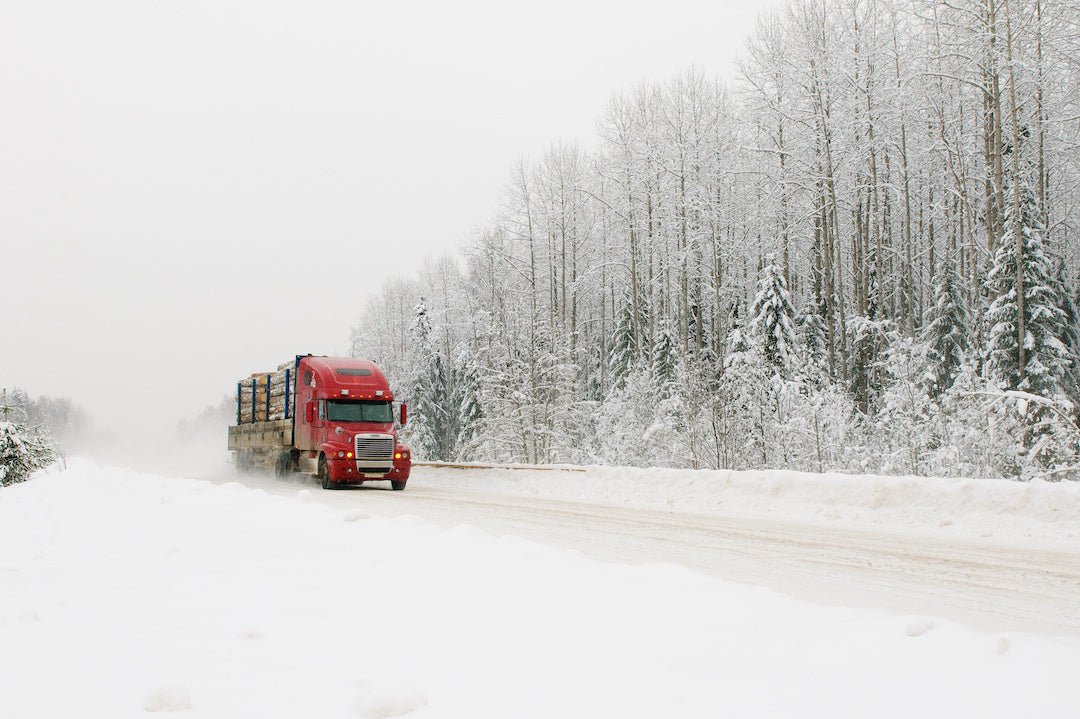
Winter Truck Maintenance: 10 Tips to Prepare Your Truck for Winter
Is your truck prepared for the cold weather? With winter quickly approaching, checking your truck’s maintenance is critical to the safety of your vehicle, those driving around you, and you.
Frigid temperatures and harsh winter conditions are hard on any vehicle, especially fleet vehicles that are on the road for multiple hours a day. Before temperatures drop to freezing points, prepare your truck for the upcoming winter with this maintenance checklist.
Avoid Cold Soaks
Cold soaks occur when the engine block's fluids and metal components are dropped due to being in chilly environments. In other words, it means the engine has been inactive for an extended period (for more than a day), and cold weather can play a part in that. Just make sure to keep your engine running, and that it’s not sitting inactively for more than 24 hours!
Check Tires and their Tire Pressure

Remember to keep tabs on your truck's tire pressure before and during winter. Cold temperatures can slowly reduce tire pressure, impacting tire tread life, fuel economy, and your safety.
If you have tires with wearing tread, this can cause slippery driving conditions as well. Make sure to have inflated tires as running winter tires in good condition will help prevent breakdowns and accidents.
Plug in the Engine Block Heater
If you drive during the winter months, you’ve probably heard that you might need to plug in your vehicle’s engine block heater so it can start. You’ll need an engine block heater because when extreme winter temperatures occur, 0° F or below, and you start the engine - the oil through the engine block thickens up and begins to get gooey. This will make it harder for the oil to move through the engine, causing it to work harder, use more gas, and produce more emissions.
If it’s going to be cold during the night or early morning hours, you should probably plug in the block heater. A good rule of thumb is to plug it in when the weather reaches 5°F.
Tip: To avoid cold soaks, this can help keep the block of the engine warm, making it easier for the engine to start.
Check Your Front, Back, and Sidelights

Test to see if all your lights are working properly. Without bright lights leading the way through snowstorms, foggy conditions, or icy roads, it can be difficult to see where you’re going.
Check Your Battery
Cold engines require much more battery power to start, and heat is damaging to a battery. Batteries drain quickly in cold weather, and can especially be challenging to charge.
During your maintenance checklist, check that the battery is not past its expiration date so you know it’s capable of holding a good charge, and clean off any connections prior often during winter.
Always Keep Your Fuel Tank at Least Half Full
This is something we at US Cargo Control always do during the winter! We recommend keeping your fuel tank half full for a couple reasons. Condensation can build up in the tank, causing fuel lines to freeze when temperatures get cold.
Another reason to keep it half full is you may get stranded during the winter due to breakdowns, traffic, or car wrecks, and keeping your tank half full allows you to keep it running for warmth should you become stranded.
Change Your Wipers

It’s important to replace your windshield wipers at least once a year, and it could be good to do it at the beginning of winter.
When driving through snow or rain, you depend on your wiper blades to keep your vision clear. The harsh conditions of freezing rain, snow, and ice build-up could leave you in a bad spot with a broken or worn-out wiper blade. Inspect your wipers to ensure they’re in top shape.
Check Fluid Levels
The important fluid levels to check regularly are engine oil, brake fluid, transmission fluid, coolant, power steering fluid, and windshield washer fluid. If any of the levels are low or empty, fill them up before you start your journey in cold weather. This also helps with maintaining a good fuel economy.
Use Winterized Fuel
Cold weather is rough on diesel fuel, and there’s nothing worse than dealing with a drop in fuel economy and your truck refusing to start when temperatures are below zero. Running your truck with untreated fuel during freezing temperatures can create many issues such as fuel gelling, frozen fuel lines, or plugged filters from build-up. Using seasonally enhanced fuels like CENEX, Wintermaster, or Premium Diesel Fuel will operate freezing temperatures as low as -30 degrees Fahrenheit.
Avoiding these problems will not help extend the life of your engine, but will keep you rolling!
Plan Ahead

Every region in the country is different, and you should plan ahead so you can treat fuel accordingly and pack the essentials. Read 15 Winter Driving Kit Essentials so you can stock your vehicle with the items you’ll need.
Other Winter Tips from US Cargo Control
We care about your safety, and we want to make sure you're able to get through the winter season. Read more of our tips to stay prepared:
4 Important Winter Driving Tips for Truck Drivers
3 Winter Truck Driving Tips: How to Protect your Rig from Salt and Grime
4 Important Nighttime Driving Tips for Truck Drivers
How to Choose and Use Tire Chains like a Pro



